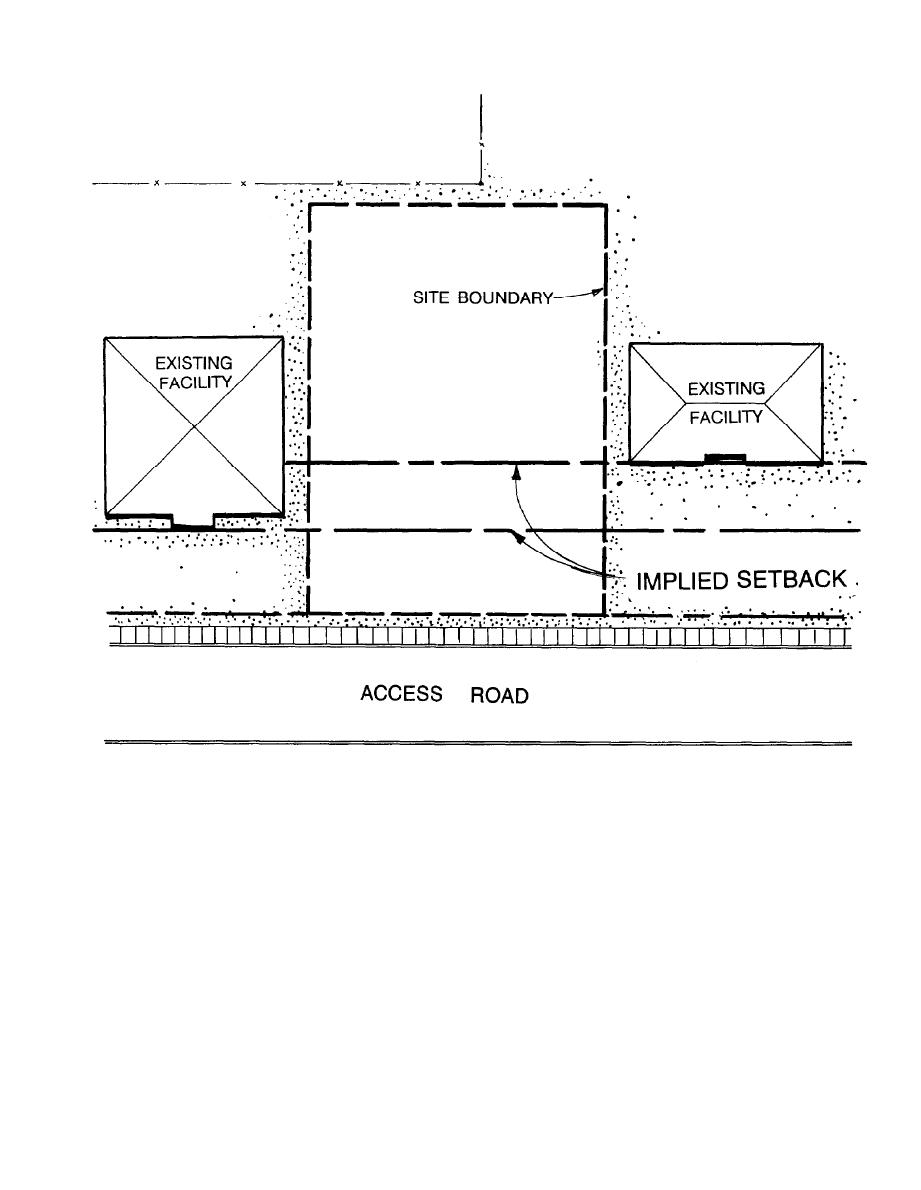
TM 5-803-14
Figure 4-1. Locating Building Setbacks.
(f) Create microclimatic pockets, as appro-
(1) Solar. Buildings should be oriented to
priate, to the east or west of the building.
take advantage of passive solar heating and cool-
(2) Other. Other site-specific conditions can
ing conditions. The solar study determines orienta-
tion. Generally, the long axis of a building is
influence building alignment. Figure 4-4 shows
how slope orientation may impact the sunlight and
oriented along or at some angle less than 45
subsequent heat a building receives. Slope orienta-
degrees to the east-west axis. As illustrated in
figure 4-3, this orientation allows facilities to do
tion may increase exposure to the sun or may, in
the following:
combination with structures or vegetation, create
pockets of shade. Figure 4-5 illustrates how build-
(a) Harvest or avoid maximum sunlight.
(b) Be protected from northern winds.
ing orientation may be modified to take advantage
of or reduce the impact of prevailing winds. Exist-
(c) Take advantage of east-west summer
breezes.
ing topography and vegetation can also create
microclimatic pockets. These pockets alter normal
(d) Create shade to the south.
weather conditions by reducing available sunlight,
(e) Locate outdoor living spaces in the more
creating shade and reducing prevailing winds.
comfortable southern area.
4-2



 Previous Page
Previous Page
